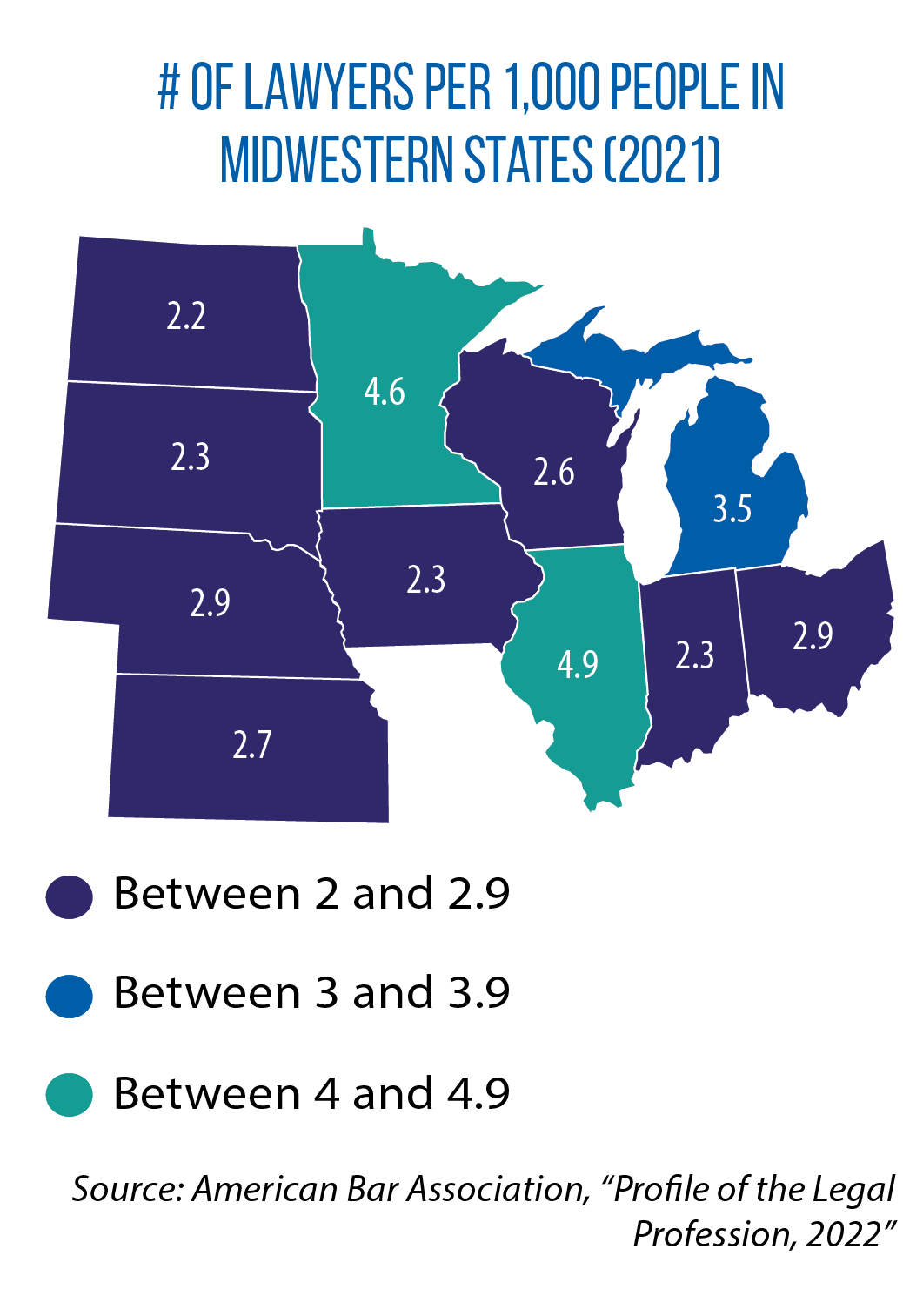Wanted: ‘Service attorneys’ for rural parts of Ohio where legal needs aren’t being met
Ohio this year will become the latest Midwestern state to offer financial incentives to fill the thinning ranks of public defenders and other attorneys practicing in rural counties.
Established under a bill signed by Gov. Mike DeWine in early 2023 (HB 150 of 2022), the Rural Practice Incentive Program authorizes the payment of up to $50,000 of an attorney’s student loans if the individual agrees to be a “service attorney” (a public defender, prosecutor or court-appointed counsel to represent indigent defendants) in an underserved community — defined as counties where the ratio of attorneys to total population is “equal to or less than” 1:700.
The Ohio Bar Association estimates that two-thirds of the state’s counties don’t have enough lawyers to meet the legal needs of local residents.
Participating attorneys will be able to claim an income tax deduction for amounts repaid by the program, which is receiving $1.5 million in state funds this fiscal year. HB 150 also creates a 17-person task force to recommend ways of improving Ohio’s indigent-defense system.
Since 2013, South Dakota has operated a program to recruit attorneys to rural areas, with the state and local governments sharing the costs. Participating lawyers get a payment equal to 90 percent of one year of the cost of resident tuition and fees at the University of South Dakota School of Law; in return, they must practice for five years in the rural county or municipality. Of 31 total participants, 15 have graduated out of the program; 12 of these 15 have stayed in their communities to continue practicing.
Late last year, the Kansas Supreme Court formed a 35-member Rural Justice Initiative Committee to study population and legal professional employment trends, as well as differences in unmet legal needs related to population density. In Kansas’ rural areas, the ratio of active attorneys to population is 1:808; that compares to 2:535 in urban areas.
Two counties in the state have no attorneys at all, five counties have one attorney, and 11 others have only two. The new committee in Kansas is expected to develop ideas on how the state can address this shortage in rural areas.